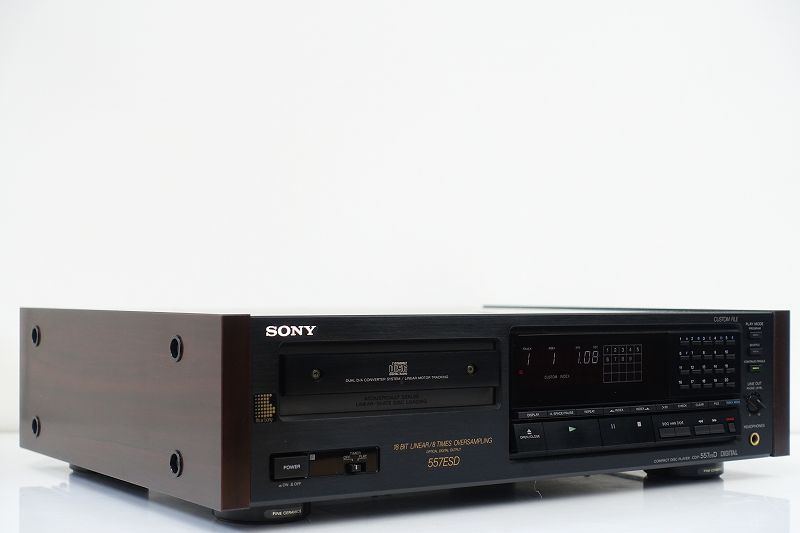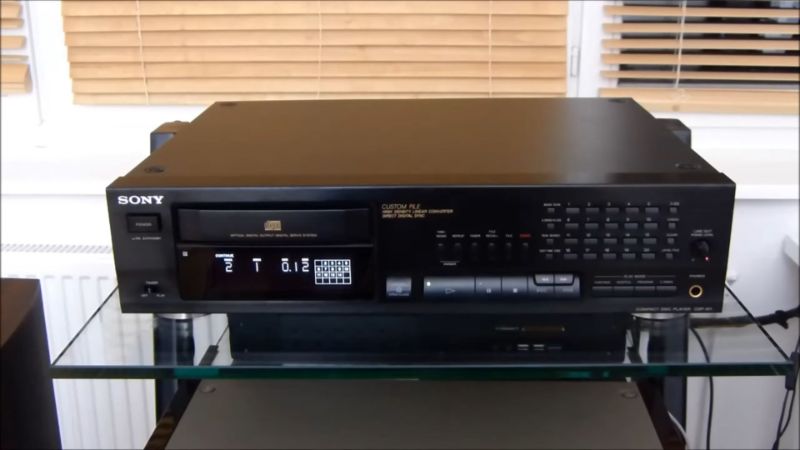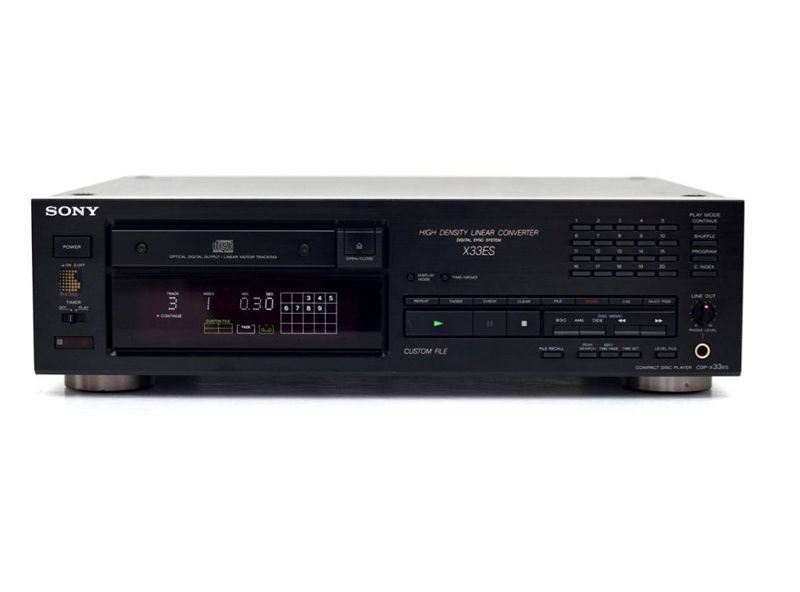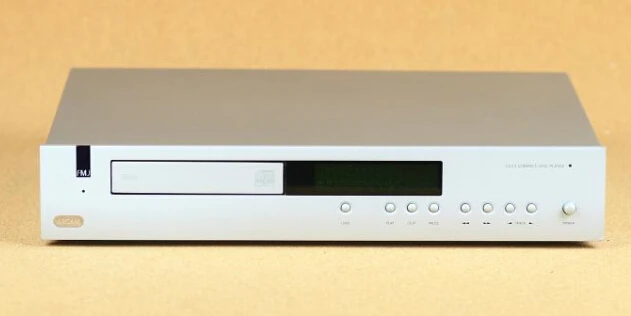MiniDisc was on its way out in 2003. Sales were dropping, and the format’s brief resurgence between 1998 and 1999 seemed like a distant memory. Of fact, it was at this point in its sales cycle that vinyl made significant advancements in the sound quality of its players, and we now see CD doing the same as it passes beyond its golden era. Sony’s £480 MDS-JA333ES demonstrated the superb sound that the tiny format was capable of in its latter days…
This machine wasn’t as solidly built as the top-of-the-line MDS-JA555ES, but it still looked like it was made of paper when compared to the neatly screwed-together £250 MDS-QB940. Even by today’s standards, it’s a quite huge and imposing machine, measuring 430x124x376 mm and weighing 10.4kg. It has a large aluminium front panel, a vibration-reducing slanted printed circuit board, the final ATRAC DSP TYPE-R, and 24-bit analogue-to-digital and digital-to-analogue converters, just like the rest of Sony’s ES players. It also contains MDLP (which allows you to record up to 320 minutes on a single CD while sacrificing sound quality), the usual bewildering edit options (name input/combine/divide/move/erase), a digital recording level control, and a ‘Jog Dial’ track selection. There’s also Sony’s ‘Variable Coefficient Digital Filter’ (which, in my opinion, should be left in the ‘normal’ setting) and – most significantly – an R-CORE transformer for clean power.
This player has a fantastic sound. It makes exceptionally clear and detailed recordings using ordinary TDK discs that really get you to the heart of the song. The MDS-JA333ES also functions as a DAC for any digital source you have connected (by one of two optical or one coaxial) digital input if you pull out the MiniDisc and click ‘REC.’ It doesn’t go through the ATRAC processing loop when used this way, so it can be used as a genuine standalone hi-fi DAC — and it sounds fantastic.
The fact that it made its budget 940QS little brother seem so terrible was most interesting to me. It’s roughly twice the price, but it’s considerably superior in every way. The contrast was audible from the opening bars of Jamiroquai’s Space Cowboy, which opened with an electric piano. The ‘333 gave the instrument a vivid, shimmering, and ‘alive’ quality, whilst the 940 turned it bluff and flat, as if to say, ‘that’s the electric piano – what more do you want?’ The midband gained significantly more ambience as the bass and vocals kicked in — you got a sense of the studio and the instruments’ place within it. The bass was noticeably improved – richer and fuller – but still fell short of the heroic standards set by the ‘555.
The cymbals were fantastic. They sounded leaden on the 940, with no identifiable texture or feel, whereas they shine on the ‘333. There were no breathing or compression artefacts in the hi-hats. The ‘555 is even better, although it’s prone to brightness, which the ‘333 appears to avoid. Janet Kay’s voice was quite lovely on Silly Games, with no harshness. The acoustic was fairly effectively represented, with only a little impression of it dropping off prematurely near the rear of the soundstage. The bass was also good, sounding quite real and organic contrasted to the 940’s unnatural, manufactured character. Finally, the MDS-JA333ES outperforms budget MD machines in terms of dynamics. It makes music pop out at you, making whatever you’re playing that much more delightful.
Then two thumbs up for one of Sony’s final best MiniDisc spinners. The MDS-JA333ES is popular among collectors these days, but it has limited appeal; eBay prices range from £200 to £400 depending on condition and which way the wind is blowing!







